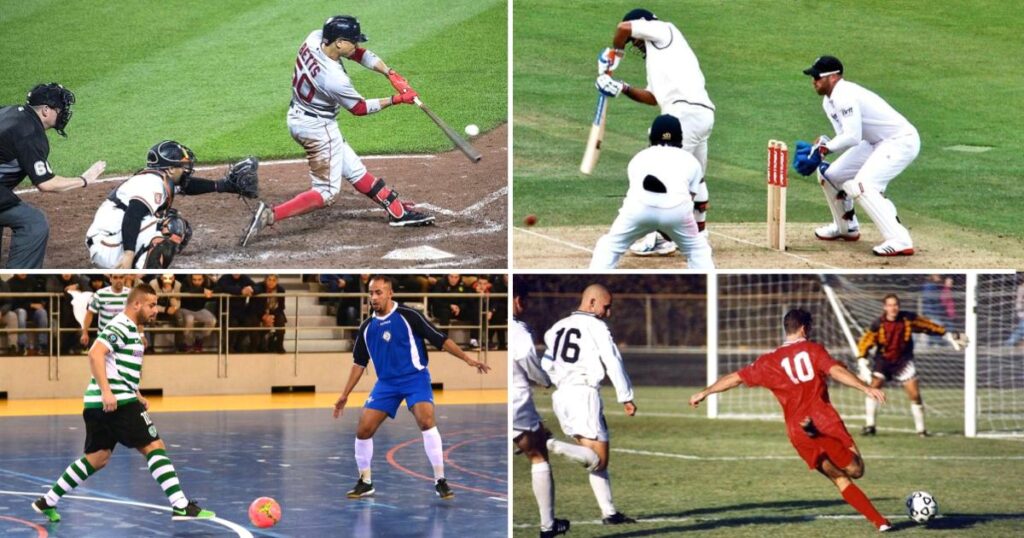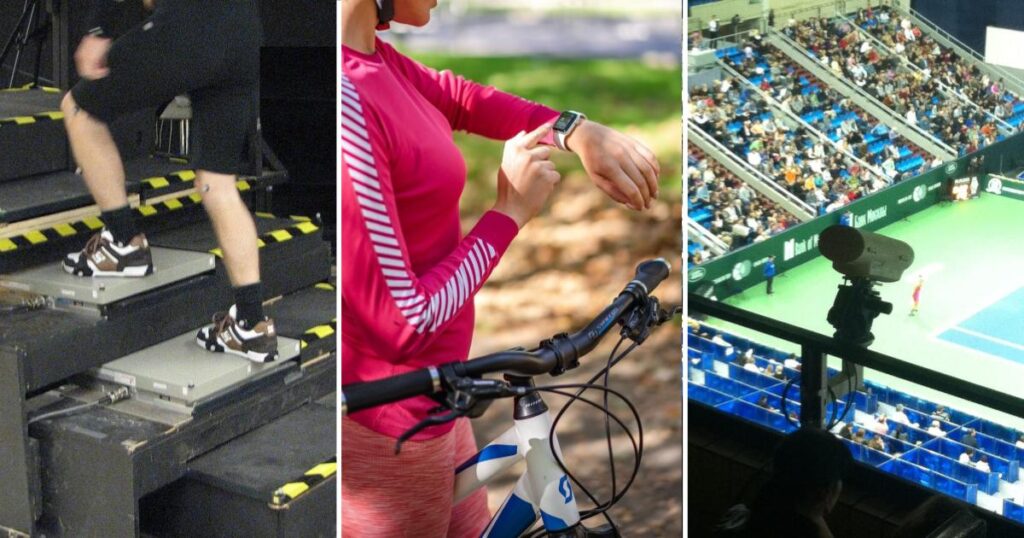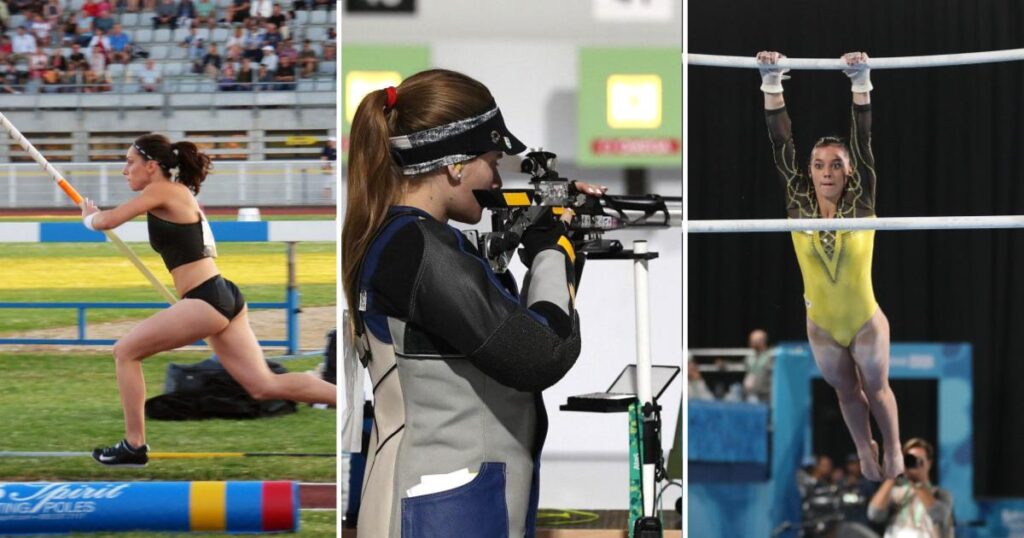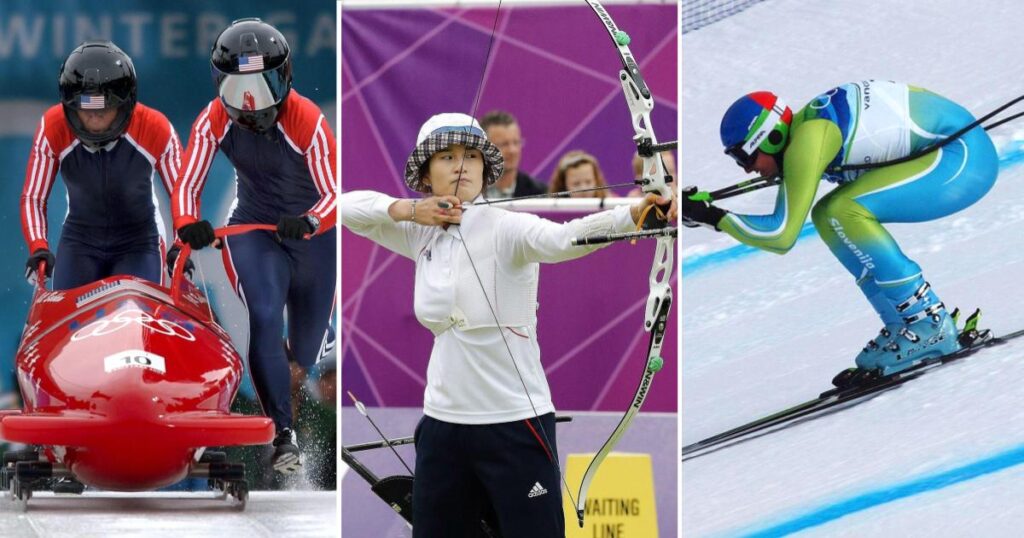Sports, whether individual or team, always have few things in common because almost every time it involves a ball, arguably one of the greatest inventions by humans. And to support we always have a complementary object such as a stick or a racket and if nothing then our foot. So clearly there will always be elements that we have common in sports. But there are certain sports that raise the eyebrows of sports fans when they see the sheer amount of similarity between these sports and the curious mind of ours starts to think if these sports are interconnected in some way or whether one is inspired by the other.
In this post we will look at sports which share a lot in common with one another but still have kept their uniqueness alive. Below we will see what are the factors that make them identical and to what extent.
1. Baseball and Cricket

The American pastime and an English invention
What is America’s pastime? You know the answer: baseball, which was first played in the early 18th century in the United States. The sport later expanded to many countries worldwide, and today it is played in more than 100 countries across all continents.
Cricket was invented in England in the 17th century. It was originally played by a few countries, such as those in the Indian subcontinent and former British colonies. In recent decades, especially since the 2000s, the introduction of a shorter format of the sport (which allows a game to be finished in a few hours) has led to its spread to other countries.
Is the bat the only thing in common between baseball and cricket?
The short answer is no. Several factors, such as equipment, gameplay, scoring, and many others, make the two sports identical to each other. We will look at the most prominent factors below:
- The very first act of a pitcher or bowler throwing the ball at the batter will make the two sports identical to someone who is seeing them for the first time.
- Scoring in these sports is done through runs. Batters actually have to run a specific distance to score runs, and fielders have to stop them from scoring runs.
- Both sports involve a player who stands behind the batter. In baseball, he is known as a catcher, and in cricket, a wicket-keeper.
- The distance between the pitcher and batter in baseball is 60 feet and 6 inches (20.2 yards), and in cricket it is 66 feet (22 yards).
- The equipment used in both sports is similar, such as helmets, gloves, protective knee and elbow pads, and white leather balls.
- Throughout the game, teams can substitute players as needed.
- Unlike other sports, baseball and cricket depend heavily on weather conditions, as bad weather can interrupt the game.
- A batter can be dismissed in a number of ways. In baseball, some of the ways they can get out are strikeout, flyout, and tagout. In cricket, they can be dismissed by catch, run out, or bowled, among other ways.
- Both sports involve multiple umpires who make decisions about outs, strokes, and many other things. Baseball typically uses 4 umpires, while cricket uses 3.
- In baseball, the maximum number of runs a batter can score from a single hit is known as a home run, while in cricket, it is six runs. Interestingly, in both sports, batters must hit the ball into the air and over the outfield boundary to score.
Other sports similar to baseball and cricket
Softball has many similarities to baseball, but is played on a smaller field. The sport was invented in the United States. The key difference between the two sports is that the ball is pitched overhand in baseball and underhand in softball.
Aesthetically, both baseball and cricket (the longer version) are pleasing sports to watch. The overall gameplay of both sports may look similar to the human eye, but those who follow the sports know the key differences between the two and their uniqueness. That’s why both sports have separate fan bases in the millions, distinct from one another.
2. Badminton and Tennis

Sascha Wenninger/Flickr.com, CC BY-SA 2.0
All it takes is a racket!
Badminton has its roots in British rule in India in the late 1800s, when British soldiers used to play it in their pastime. The sport then naturally got the attention of many Asian and European countries. Tennis, on the other hand, has a long history dating back to the 12th century, but the development of professional tennis as played today began in the mid-18th century. The first tennis tournament was held in 1882.
One net that unites the two
A net, which is one of many common things in these two sports, divides the court but unites these two sports when we talk about their similar aspects. Both being racket sports is one important factor that brings these two sports closer. Apart from that, there are many other things in common between the two. We will look at each of them in detail:
- The format of these sports is based on a single element: sets. Players must play a certain number of sets, and the winner who wins the most sets is declared the winner.
- Both sports are structured the same way. A net in the middle separates the two players. In tennis, the playing area is larger than in badminton, but the basic idea is the same: to hit the ball or shuttlecock over the net and onto the opponent’s side.
- Although badminton rackets and tennis rackets may look similar, there is a significant difference in their weights and sizes. Badminton rackets are lighter and smaller than tennis rackets.
- The shots that players play are quite similar, but because badminton is played on a relatively smaller court and does not involve a ball, the pace at which the game progresses is different. The forehand, backhand, and volley are the shots that athletes play in both sports.
- The competitions in both of these sports involve singles and doubles tournaments.
- The seating arrangement of the umpires in both badminton and tennis is the same. They sit on a chair at the end of the net that is placed at a higher position from the ground.
3. Basketball and Handball

Basketball is one of the most famous sports in the USA. The sport was invented in 1891 by college instructor James Naismith. Later, the sport became popular worldwide in a very short span of time and is now played globally, both professionally and at the amateur level. A few years after the invention of basketball in 1898, handball also entered the sporting world, but it was invented in Denmark. Handball is now played in many countries, especially in European countries like Germany, Denmark, Sweden, France, and others.
Both of these sports are almost always played with hands. But is that enough resemblance?
The answer is certainly no. Just because both of these sports involve hands as the predominant body part used to play them does not necessarily make them similar to each other. However, we will delve deeper and explore more aspects of both these sports that share common characteristics. This will certainly help us determine whether they are similar or not:
- In basketball, dribbling and shooting are two important aspects of the game, which we also see in handball.
- Handball is typically played using only the hands, as using any part of the body below the knee is not allowed. According to the rules of handball, intentionally using a foot or fist results in a violation.
- Both sports feature two teams of players who try to score by shooting the ball into the opponent’s goal post.
- Both sports are fast-paced and require quick movements and frequent running, which makes them high-intensity games. As a result, player substitutions are allowed in both sports.
- Basketball and handball courts have similar dimensions and are typically played indoors. Handball courts are larger than those used in the NBA.
- As mentioned earlier, both of these sports share common playing styles: offense, defense, and tackling. All of these aspects of the game are involved in both sports.
- If basketball has a two-step rule, allowing players to take two steps before shooting the ball, then handball has a three-step rule, based on the same principles.
- Other than the fact that basketball uses a hoop as a goal post instead of a net, most of the elements of these sports are quite similar to each other.
4. Volleyball and Fistball

faustball@stoeldt.de, CC BY-SA 3.0, via Wikimedia Commons
Volleyball and fistball are both team sports, and the aim in both sports is to hit the ball over a net on the opponent’s side in a way that they won’t be able to make a counter. Fistball is played on a larger court than volleyball. Compared to volleyball, fistball is played in relatively fewer countries.
Is fistball a version of volleyball played with the fists?
Fistball, though it may look like a version of volleyball to normal human eyes and brains, is a distinct sport altogether due to several factors and its rules. Of course, there are many factors in common with volleyball, but it is not volleyball. The field dimensions, team composition, and distinct rules all make it a unique sport.
- Both sports use a net, and the use of hands and the way players field and make returns make the two sports identical.
- Both sports can be played indoors or outdoors, depending on the conditions and requirements.
- The courts are divided into two parts by a high net in the middle. The team sizes in these two sports are not the same: fistball has one fewer player than volleyball, which has six players per team.
- The hitting techniques and passing between the team players are identical in both sports.
- Both volleyball and fistball use best-of-three and best-of-five playing formats, depending on the nature of the competition. The team that wins the most sets wins the match, a rule that applies to both sports.
- In volleyball, a team wins a set by scoring 25 points, while in fistball, the winning score is 11.
- The field positions found in volleyball, such as outside hitter, setter, and middle blocker, can also be found in fistball, with slight variations in names and positions. Some examples of player positions in fistball are attacker, middle setter, and defender.
5. Figure skating and Artistic roller skating

G.Garitan, CC BY-SA 4.0, via Wikimedia Commons
The winter games of the 1908 Olympics were inaugurated with figure skating as the first sport. Artistic roller skating is very similar to figure skating, and the only thing that separates them is the use of roller skates. Many athletes who figure skate also train in roller skating, as it helps them improve their ice skating skills. The same goes for athletes who train for artistic roller skating.
Though skates are common in both, there’s still more to it.
Skates are an important part of these two sports, and it is obvious to everyone. It’s a no-brainer. But if we set the skates aside (not literally), there are some common details and aspects of these two sports. Let’s take a look at them.
- Both sports involve skates as their main equipment. In figure skating, ice skates are used, while in artistic roller skating, roller skates are used.
- Both sports share an element of rhythmic movements.
- The use of background music during athletes’ routines is prominent in both sports.
- In both figure skating and artistic roller skating, routines can be performed individually or with a partner.
- The physical movements and use of the floor are identical in both these sports. Athletes perform complex bodily movements while skating across the floor in specific patterns.
- The elements of dance and footwork moves are what make these two artistic sports similar. The use of spins, jumps, lifts, and synchronized transitions is common to both.
- Although the routines in both sports are performed on the floor, figure skating is performed on a comparatively bigger floor than artistic roller skating.
6. Lacrosse and Field Hockey

Sticks, a ball, and a group of friends—that’s all you need to enjoy these two sports. The idea of playing a sport with sticks is fascinating in and of itself. The level of difficulty is much greater than what we see with the naked eye when two teams play against each other. To maneuver the ball with such control and precision requires the temperament that players of these sports possess, and it is evident to everyone.
Here are some of the known similarities between lacrosse and hockey:
- The equipment used in both sports is not only similar, but also quite numerous. The goalkeeper wears a lot of protective gear to avoid potential injury.
- Following are some of the equipment that players use in both sports: a stick, a mouthguard, knee and elbow guards, shoulder pads, gloves, and a helmet.
- Both sports are contact sports, as they involve blocking the opposing player from making a goal in the goal post of their own team.
- The main equipment in hockey and lacrosse is the sticks, but the design of the sticks used in both sports differs.
- Field positions in both sports share similarities with each other. Goalie, midfield, and forward (attacker in lacrosse) are some field positions.
- The duration of these sports may vary from tournament to tournament, but usually both sports last 60 minutes with several breaks.
- The usual elements of these types of sports, such as blocking, passing, and shooting, can be found in both lacrosse and field hockey.
7. Soccer and Futsal

Thomas Bresson, CC BY 3.0, via Wikimedia Commons
Arguably, soccer is one of the most followed sports in the world. For many people, it is the definition of sports because that is what they follow. Futsal, on the other hand, is a sport that does not have a massive following like soccer, but it is growing in popularity. It was invented by sports coach Juan Carlos Ceriani in 1930. It is well established in South America and most European countries.
Futsal: Is it indoor soccer?
Futsal, when viewed from a bird’s-eye view, looks like soccer being played indoors with fewer players. At some point in childhood, we all wanted to play soccer indoors, but no one allowed us. We can definitely fulfill that desire with futsal. Futsal, like soccer, is a fast-paced sport, which is also due to time limitations.
We’ll look at some of the similarities between these two sports below:
- The overall flow of how futsal is played is the same as soccer’s. It involves two teams, two goalkeepers, and two goalposts, each pertaining to a team. And the players’ aim is to score a goal in the opponent’s goal.
- Just like in soccer, the substitution of players is allowed on the go in futsal. There are only five players per team in futsal because it is played indoors on a smaller playing field.
- Interestingly, the kicks such as volley, bicycle kick, and laces kick that we usually see in soccer are also commonly attempted with great fluidity in futsal. Performing these kicks on a court somewhat larger than a basketball court is an amazing feat of athleticism.
- Futsal comes under the purview of FIFA, an official governing body for soccer. FIFA also organizes the Futsal World Cup every four years, the same as the soccer World Cup.
- Both sports share the usual in-game elements, such as penalty kicks, yellow and red cards, passing, and dribbling.
8. Discus throw and Shot put

Kastom, CC BY-SA 3.0, via Wikimedia Commons
One involves throwing, and the other “putting”
Discus throw is a sport in which an athlete throws a circular disc, while in shot put, an athlete aims to throw a metal ball with the help of their arm strength as far as possible. Both of these sports fall under the track and field category in the Olympic Games, and both test the upper body strength and power that an athlete generates to throw the object.
There’s more in common between these two than just throwing an object
- In both of these sports, the initial stance of an athlete who is about to throw the object is quite similar to each other.
- One more contributing factor to the identicalness of these two sports is the physical stature of the athletes who compete in them. Athletes in both sports tend to be muscular and have bulked-up bodies.
- The stance of an athlete in both of these events is such that the player initially stands with their back facing the field where they are about to throw the ball or disc. As he approaches, he must spin his body in order to generate enough power to throw the object.
- At their core, athletes in both of these sports aim to throw an object at a desired distance by generating power with upper body strength.
- Scoring is another aspect that is similar in both of these track and field sports. The distance an athlete throws is measured to determine the score. The winner is the athlete who throws the discus or ball the farthest.
- Both of these sports are physically demanding, as is the case with many other track and field sports. An athlete needs to be accurate with the trajectory they are targeting and coordinate their movements accordingly.
- In both of these events, an athlete is given three attempts, and the attempt in which he covers the most distance is chosen as his best.
9. Hurdling and Steeplechase

Augustas Didžgalvis, CC BY-SA 4.0, via Wikimedia Commons
Hurdling has a rich history that spans over a hundred years. The sport originated in England and has been part of track and field events in the Olympics since the early 19th century. Ireland, a neighboring country of England, is where steeplechase originated. This sport has been part of the Olympic Games since the same time as hurdling.
Two sports that involve tracks, races, and obstacle
- Both hurdle and steeplechase are track race sports in which athletes must cross over obstacles to reach the finish line.
- Steeplechase obstacles include water ditches and fences, whereas hurdling obstacles are wooden bars attached to metal bars.
- Both sports involve several players racing against each other. The number of racers in steeplechase is relatively larger than in hurdling.
- Both sports are carried out on running tracks used in track and field games.
- The players have to complete a certain number of lapses and obstacles, both in these sports.
- Lapses change in accordance with the distance that needs to be covered in the race. However, a 3000 meter steeplechase usually consists of 7.5 laps.
- Both sports share a fair amount of similar aspects in terms of skills and preparation. Racing competitions that involve obstacles as added difficulty are immensely challenging.
- Athletes need to work on their speed, stamina, and reflexes to perform in racing events like hurdles and steeplechase.
Regardless of how similar or different each sport is, all sports inspire us in our everyday lives. Sport is an integral part of our lives, as sports and sportspeople teach us important things that we sometimes lack for success in our pursuits. Have you enjoyed all these little details in each of these sports, which have some kind of similarity to each other?
This post has actually provided us with a very good example of a saying that goes something like this: “Always remember that you are absolutely unique. Just like everyone else“. All of the sports we discussed above have some similarities to other sports, but they are still unique in their own way.
Also see:
Competitive Team Sports That Do Not Involve a Ball as Their Primary Object
9 Olympic Sports That Are Less Physically Demanding But Still Equally Challenging





